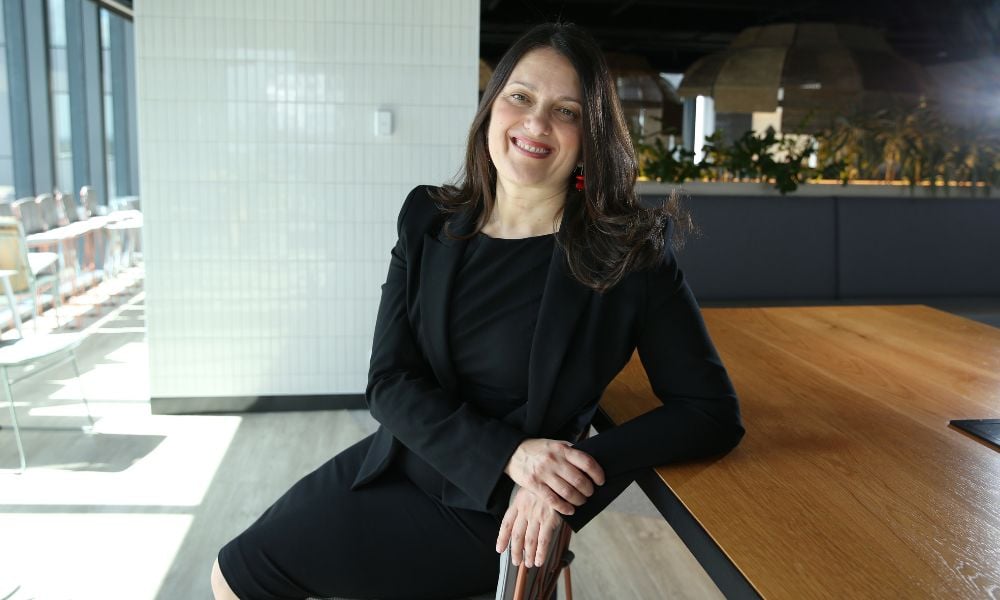Economist discusses September forecast

The official cash rate has increased by 50 basis points for the last three months, but a major bank economist says it’s unlikely that the pace of interest rate rises will slow just yet.
The official cash rate, currently 1.85%, will be reviewed on Sept. 6. It has already increased by 175 basis points this year, and Westpac Business Bank senior economist Besa Deda (pictured above) said the bank’s core view is that a fourth double cash rate hike will occur.
As there was close to an 80% probability of a 50-basis-point move, interest rate markets have already priced this in, Deda said. Given the tight labour market, and that inflation has not yet peaked, Westpac’s view is that it’s still too early for the RBA to be scaling back, she said.
She expected that the RBA would want to “stay tough on inflation” until they’d seen concrete signs of it starting to improve.
“They’re not at that point yet, so I think September is a 50-basis-point hike,” Deda said.
Read next: Three banks increase variable interest rates
Annual inflation hit 6.1% in the June quarter and is expected to rise further. RBA governor Philip Lowe said in the August monetary policy statement the bank’s central forecast was for inflation to peak around 7.75% over 2022.
Westpac Group forecasts show annual inflation peaking at 7.6% later this year, but Deda said there was a risk it could climb close to 8%.
“Whilst there are signs that global supply chain disruptions might be improving, inflation is still very elevated: the RBA will want to ensure that inflation expectations remain in check,” Deda said.
The bank is forecasting the official cash rate to be at 3.1% at the end of this year, slightly outside of what is considered a neutral interest rate range of 2% to 3%, she said.
“After September, we think there’s the possibility that they’ll start to scale to 25-basis-point hikes, so we’ve got 25 basis points in October, November and December,” Deda said.
“That 3% handle is quite critical for the cash rate, and [it’s] moving outside of what I consider is the neutral zone … what the RBA does later this year and early next year will be extremely data dependent.”
ABS Wage Price Index data for the June quarter shows annual wage growth of 2.6% – the highest since the September 2014 quarter. This included a quarterly increase of 0.7%: the third consecutive quarterly increase.
Deda noted that wage growth had picked up from the trough of mid-2020, but said it largely fell short of market expectations. She expected wage growth to pick up over the rest of the year, and into next year.
With bonus payments included, the annual wage growth figure is 3.1%, she said.
“Employers are looking at non-wage payments or bonus payments to attract and retain staff … I don’t think it’s capturing the full story on wage pressures in the economy,” Deda said. “But wages aren’t growing as fast as prices, so real wages contracted by their fastest on record in the June quarter.”
Deda said consumer sentiment had remained very resilient despite pessimism around the economic outlook, with pent-up demand and household savings among the likely factors at play.
“We expect that through this year and next year, that some of that momentum in consumer spending growth will fall away, particularly as the RBA continues to hike the cash rate,” Deda said.
As households tighten their belts, discretionary areas of spending will be harder hit, she said.
Read next: Reserve Bank criticised over interest rate guidance
Former principal adviser to Treasury Warren Hogan, who is currently economic advisor to Judo Bank, told MPA earlier this month that following four consecutive interest rate hikes, there was now a question as to whether the RBA needed to keep hiking the cash rate at the same pace.
“Their [the RBA’s] economic forecasts are assuming a cash rate of 3% by the end of the year … I’m comfortable with the view that the cash rate goes up further, but the pace they’ve been setting of 50 basis points every month, very shortly, will need to go back to 25 basis points,” Hogan said.



